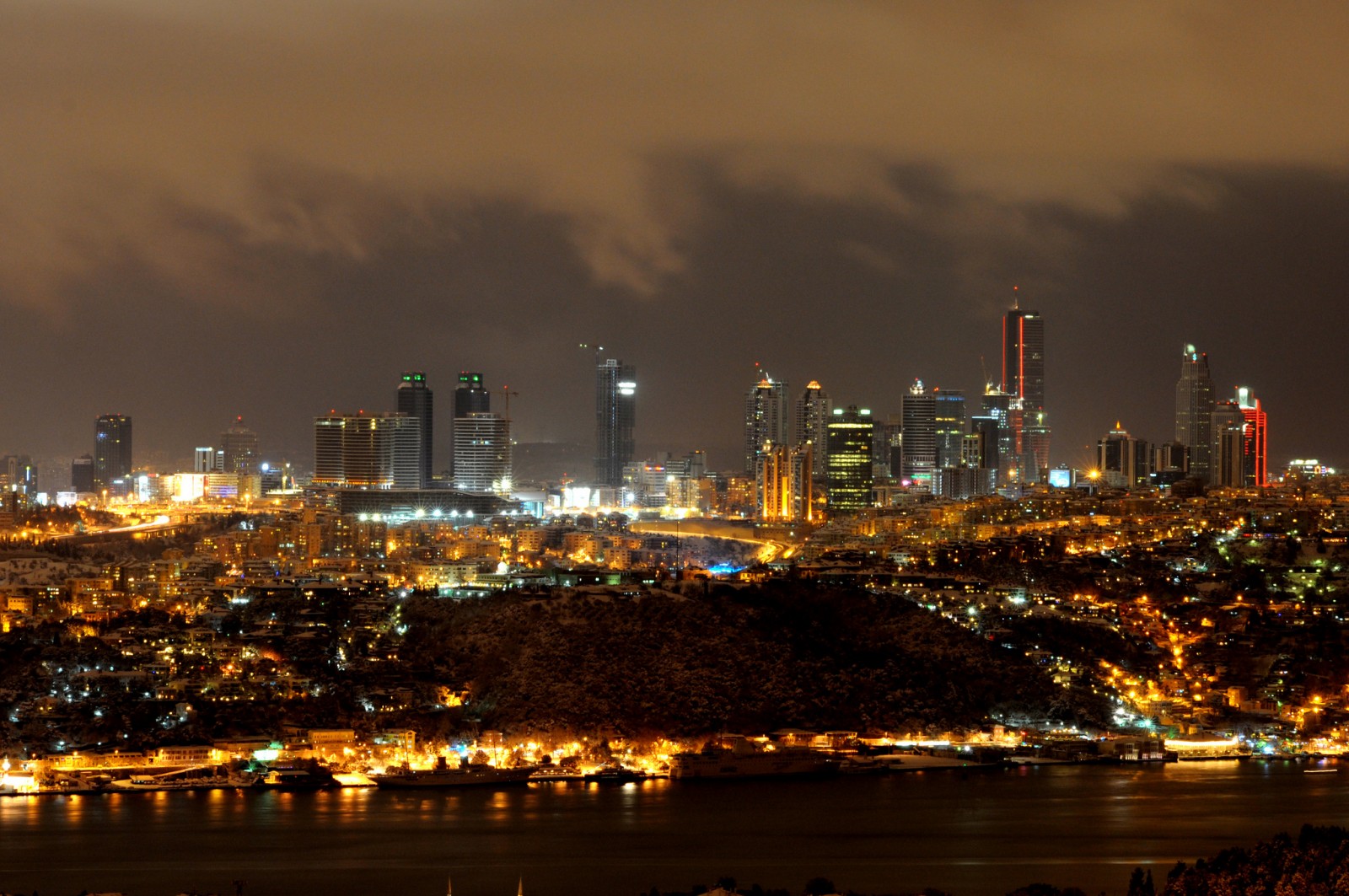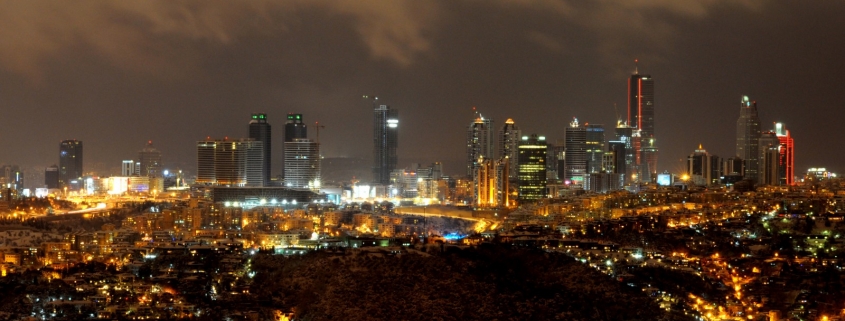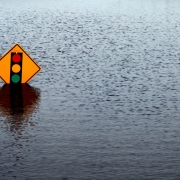HotSpots H2O: Amid Water Crisis, Recent Storms Provide Some Relief to Istanbul

Istanbul at night. © Wikimedia Commons
Recent storms provided relief to drought-stricken Istanbul and surrounding areas, leaving parched reservoirs in better shape than in mid-January, when water levels fell dangerously low.
After several seasons of limited rainfall, reservoirs in Turkey dropped last month to their lowest levels in years. In Istanbul, the country’s most populated city with 15 million people, dams were less than a quarter full, causing concerns over limited water supply in the coming months. But in recent weeks, a series of storms helped to alleviate the crisis, increasing water levels to 44 percent in reservoirs operated by the Istanbul Water and Sewerage Administration.
The past two years have been especially dry in Turkey. Barely any rain fell in the summer and fall of 2019, and there has been below average precipitation every month since July 2020 for almost all of Turkey’s provinces. In the last three months of the year, precipitation was nearly 50 percent lower than average.
Turkey has dealt with drought for decades. But water policy observers say that the country’s leaders are taking the wrong steps in response to a changing climate.
“Instead of focusing on measures to keep water demand under control, Turkey insists on expanding its water supply through building more dams,” Akgün İlhan, a water management expert at the Istanbul Policy Center, told The Guardian. “Turkey has built hundreds of dams in the last two decades. The warning signs have been there for decades, but not much has been done in practice.”
Development growth has been particularly destructive too. Wetlands, agricultural land, and forests have been paved over in a bout of urban expansion. But economic growth does not translate into environmental stability, and “these policies cannot solve Turkey’s drought problem,” Ümit Şahin at Istanbul’s Sabanci University told The Guardian.
Turkey has 1,550 cubic meters of water per capita per year, but that number is expected to decline to 1,000 cubic meters by 2050 due to climate change, industrial use, urban growth, and an increase in population. That amount of water per capita is commonly viewed as the threshold for national water scarcity.
Water scarcity has also impacted Turkey’s agricultural industry. In particular, dry ground and soil made it difficult for Turkish farmers to plant wheat, which has delayed cultivation. Olives, deprived of moisture, roasted and died on the trees, causing production to dip substantially. And the Konya Plain in central Turkey received 38 percent less precipitation than the year before, reducing grain harvests in the region.
In the coming months, officials in some Turkish municipalities are warning residents to preserve as much water as they can by using their supplies efficiently. Istanbul authorities are also installing rainwater catchment tanks in large buildings, and the Turkish government has drafted a plan to confront scarcity, such as increasing water-use efficiency and building 150 dams to trap surface runoff. The plan is expected to come into effect this year.
Elena Bruess writes on the intersection of environment, health, and human rights for Circle of Blue and covers international conflict and water for Circle of Blue’s HotSpots H2O.













Leave a Reply
Want to join the discussion?Feel free to contribute!